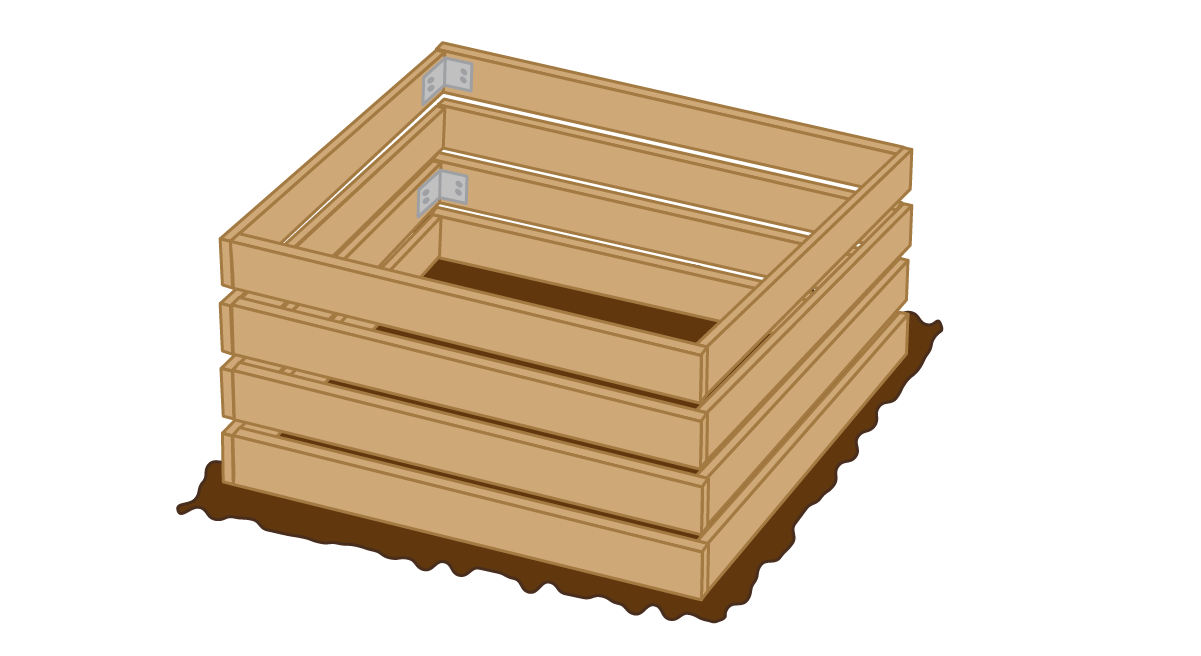Building a Home Compost
On average 1/3 of home waste is organics, particularly food waste which is most often sent to landfill. This is a significant problem as organics and landfill release methane, a greenhouse gas that is 8 times more potent than carbon dioxide CO2. Around the world, this amounts to around 8% of our greenhouse gases. So if you're itching for a project to do this weekend or as restrictions ease we've put together some instructions on how to build your own home compost.
Having said that there are lots of different ways to do this, so feel free to adapt to your needs!
1. What you will need
- Spare wood or wooden palettes for the sizes and posts (It's best to find wood of around 1m in length to make sure it will be a good size)
- Metal brackets
- Long nails
- Extra wood if you want to make a lid for on top
- Sledgehammer and regular hammer

2. Where it should go
A good rule of thumb for where to place your compost, is to have it near where you are going to use it. It is important that the area is well drained and draws moisture away from the bottom of the bins, otherwise it will become soggy and that slows down the compost process greatly. You want a place that gets plenty of sun and ensure it is easily accessible for adding waste and regular mixing. It's also best to keep it out of sight and away from the living and sleeping areas of the house.
3. How to build it
a. Find a 1x1m area somewhere in your backyard that will be suitable for your compost. Clear the area and if it's too uneven, you can level the space with a shovel or rake.
b. You will want to push the four stakes in on the four corners of your compost 1m ar, using a sledgehammer or something alike to push it into the ground, about 20cm to 30cm deep.
c. Hammer or drill planks going up the stakes. Space the planks roughly 50mm apart to help with the airflow through the compost. You want to use about 4 or 5 plants on each side to make it high enough.
d. Use metal brackets on the inside of your compost to keep it together tight

e. You can start filling your compost with dirt, leaves and other organic materials, and food waste.
f. If you want a lid on your compost bin (which is recommended), you can make a simple one by nailing together planks until you have a square that will fit on top of your compost. Then nail another two planks running parallel across the top. to keep them together.

4. What you can and can't put in a compost
The majority of organic waste material from your kitchen and garden waste can go into the compost bin. This means leaves, sticks, twigs, newspaper, fruit and vegetable kitchen scraps, lawn clippings, egg shells, coffee grounds, and paper tea bags.
You shouldn't add meat or dairy products, human or animal waste, and any deseased plant material. These tend to attract pests and rot down badly or could be considered a health hazard.

5. How you can maintain and use your compost
You will want to keep the pile dry as the materials going into it will create moisture and you are wanting as little sogginess as possible. If you find that your compost bin is wet and soggy, try to add dry carbon-based materials such as dry leaves or dry lawn clippings.
Compost has a variety of benefits when used in your garden. It replaces nutrients that have been removed during a growing season, improves soil structure and increases the amount of oxygen available to plants. Compost also conditions soil, improves moisture retention, increases earthworm activity and improves fertiliser use by plants.